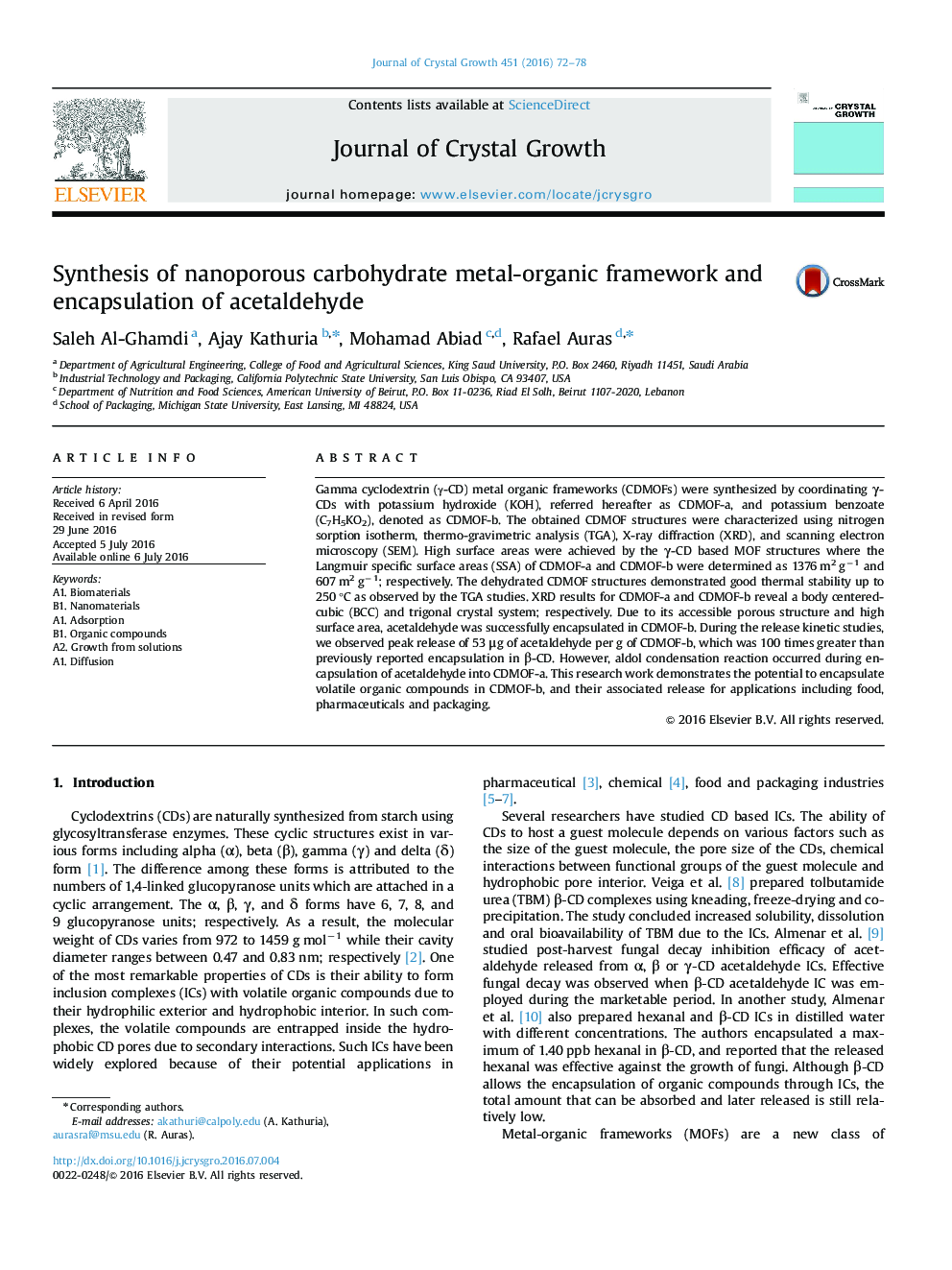| Article ID | Journal | Published Year | Pages | File Type |
|---|---|---|---|---|
| 1789480 | Journal of Crystal Growth | 2016 | 7 Pages |
•Two different nanoporous high surface area CDMOFs were synthesized using slow vapor diffusion process.•Physical, thermal properties and crystal structure were studied.•Interactions between acetaldehyde and synthesized CDMOFs were examined.•Acetaldehyde was successfully encapsulated in a CDMOF.•Release kinetics of acetaldehyde was analyzed using gas chromatography and thermo-gravimetric analysis.
Gamma cyclodextrin (γ-CD) metal organic frameworks (CDMOFs) were synthesized by coordinating γ-CDs with potassium hydroxide (KOH), referred hereafter as CDMOF-a, and potassium benzoate (C7H5KO2), denoted as CDMOF-b. The obtained CDMOF structures were characterized using nitrogen sorption isotherm, thermo-gravimetric analysis (TGA), X-ray diffraction (XRD), and scanning electron microscopy (SEM). High surface areas were achieved by the γ-CD based MOF structures where the Langmuir specific surface areas (SSA) of CDMOF-a and CDMOF-b were determined as 1376 m2 g−1 and 607 m2 g−1; respectively. The dehydrated CDMOF structures demonstrated good thermal stability up to 250 °C as observed by the TGA studies. XRD results for CDMOF-a and CDMOF-b reveal a body centered-cubic (BCC) and trigonal crystal system; respectively. Due to its accessible porous structure and high surface area, acetaldehyde was successfully encapsulated in CDMOF-b. During the release kinetic studies, we observed peak release of 53 μg of acetaldehyde per g of CDMOF-b, which was 100 times greater than previously reported encapsulation in β-CD. However, aldol condensation reaction occurred during encapsulation of acetaldehyde into CDMOF-a. This research work demonstrates the potential to encapsulate volatile organic compounds in CDMOF-b, and their associated release for applications including food, pharmaceuticals and packaging.
